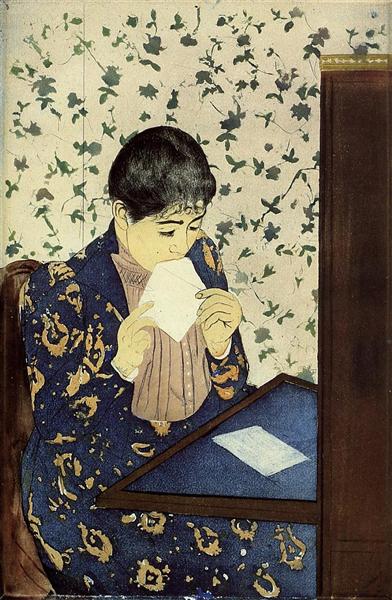The Letter
Metropolitan Museum of Art (Met), New York City, NY, US
Mary Cassatt, 1891
In April of 1890, Cassatt visited an exhibition of Japanese colored woodcuts at the École des Beaux-Arts in Paris. Afterward, she decided to produce a sequence of ten prints that would depict the daily life of a contemporary woman. The completed series contained depictions of women getting ready, washing their children, having tea, and more. This particular piece portrays a woman sealing a letter at her desk. The composition creates balance by combining patterns (the wallpaper and the woman's dress) with solid areas of color (the vertical back of the desk and the paper of the letter and envelope). The viewer is drawn into the shallow space of the room, where the skewed writing panel of the desk illustrates the use of forced perspective. These artistic choices were influenced by traditional Japanese printmaking, but the woman's clothing and other objects are all contemporary elements of Cassatt's world.Mary Cassatt often depicted the private lives of women and children in her paintings. The Letter is one such painting, which she created in the Japanese wood block print style. The graphic decorations on the woman’s dress, as well as the wallpaper behind her, indicate the extent of Japanese art on her style. The artwork, which depicts a woman sitting at a desk inside, mailing an envelope, is a more than just a quaint genre painting. By painting the woman indoors, Cassatt was making a statement about the way women were treated. In this case, the woman is sitting inside in solitude, due to the fact that social mores restricted the activities that she could do outside the home.
